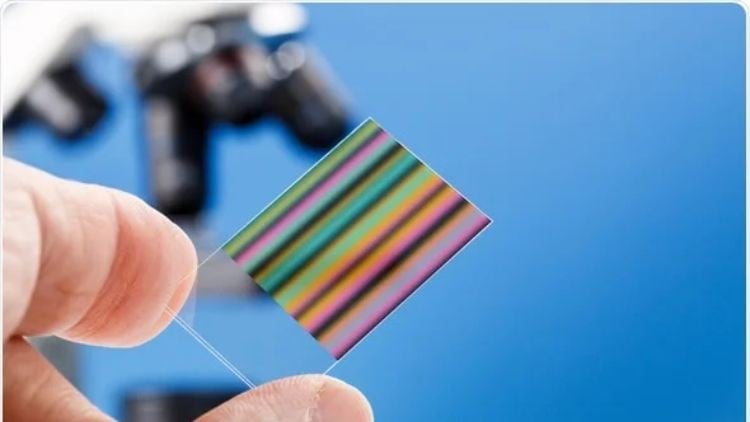Molecular Biology & Chromatography Techniques Course
- Description
- Curriculum
- FAQ
- Reviews
Overview
Molecular Biology involves the study of biological activities at the molecular level, focusing on DNA RNA, and proteins. On the other hand, Chromatography Techniques refer to a set of laboratory methods for separating and analyzing complex mixtures. Together, these fields provide a comprehensive understanding of the building blocks of life and the analytical tools to investigate them.
Benefits of Learning
-
Holistic Understanding- Gain profound insights into the molecular mechanisms governing life processes.
-
Research Opportunities- Explore avenues for groundbreaking research in genetics, genomics, and biochemistry.
-
Interdisciplinary Knowledge- Develop a cross-disciplinary skill set essential for modern scientific inquiry.
-
Industry Relevance- Align with the ever evolving demands of biotechnology, pharmaceuticals, and healthcare sectors.
Who Can Learn
-
Aspiring Scientists- Individuals with a passion for scientific exploration.
-
Biotechnology Enthusiasts- Those interested in the application of biological processes for technological advancements.
-
Laboratory Professionals- Seeking to enhance their skills in analytical techniques.
-
Graduates in Biology, Biochemistry, or Related Fields- Looking to specialize in molecular-level research
Career Scope
-
Biotechnologist- Develop and implement biotechnological solutions.
-
Geneticist- Study and manipulate genes for various applications.
-
Pharmaceutical Researcher- Contribute to drug discovery and development.
-
Clinical Laboratory Scientist- Perform diagnostic tests using molecular techniques.
-
Academic Researcher- Engage in research at universities and research institutions.
Salary Package with Job Roles in India and Abroad
India
-
Entry-Level- INR 4-6 lakhs per annum (Biotechnologist, Laboratory Technician)
-
Mid-Career- INR 8-12 lakhs per annum (Geneticist, Research Scientist)
-
Senior-Level- INR 15 lakhs and above (Pharmaceutical Research Director, Professor)
Abroad
-
Entry-Level- Dollar 50,000 – 70,000 per annum (Research Associate, Laboratory Technologist)
-
Mid-Career- Dollar 80,000 – 120,000 per annum (Genomics Specialist, Senior Scientist)
-
Senior-Level- Dollar 150,000 and above (Biotechnology Director, Principal Investigator)
Requirements to Study
1. Educational Background- A bachelor’s degree in Biology, Biochemistry, or related fields.
2. Prerequisite Knowledge- Basic understanding of cellular biology and biochemistry.
3. Technical Skills- Proficiency in laboratory techniques and scientific instrumentation.
4. Computer Skills- Familiarity with data analysis and bioinformatics tools.
-
1IntroductionVideo lesson
-
2Biobased ProductsVideo lesson
-
3Types of BioproductsVideo lesson
-
4What is Scale-UpVideo lesson
-
5Bioreactor - Production UnitVideo lesson
-
6Example of Food Biotechnology Cheese MakingVideo lesson
-
7Amul ProductionVideo lesson
-
8Key Points for Consideration For Scale Up Your Industrial BioprocessVideo lesson
-
9Advantage and DisadvantageVideo lesson
-
10Indian ScenarioVideo lesson
-
11Fermentation and MicrobesVideo lesson
-
12Why Microbes are The Key Player of FermentationVideo lesson
-
13Central Metabolic PathwaysVideo lesson
-
14Alcoholic & Acidic FermentationVideo lesson
-
15National Collection of Industrial Microorganisms (NCIM)Video lesson
-
16Primary & Secondary ScreeningVideo lesson
-
17Feedstock For FermentationVideo lesson
-
18Selection of Process ParametersVideo lesson
-
19Media Formulation For Better YieldVideo lesson
-
20Selection of Process Parameter and InhibitorsVideo lesson
-
21SterilizationVideo lesson
-
22ExampleVideo lesson
-
23Research ArticleVideo lesson
-
24Physicochemical FactorsVideo lesson
-
25Batch FermentationVideo lesson
-
26Fed Batch Fermentation & Its TypeVideo lesson
-
27Desired ProductVideo lesson
-
28Continuous FermentationVideo lesson
-
29Submerged and Solid State FermentationVideo lesson
-
30SubstratesVideo lesson
-
31Physico Chemical Factors For SSFVideo lesson
-
32Comparing Submerged and Solid State Fermentation of Agro-IndustrialVideo lesson
-
33Production MetricsVideo lesson
-
34Strain Improvement- Application of MutationVideo lesson
-
35Example of Penicillin & Lysine ProductionVideo lesson
-
36Factor Associated With MustagenesisVideo lesson
-
37Strain Improvement- Application of Metabolic EngineeringVideo lesson
-
38Approaches to Engineer Strains For Stable & Reliable ProductionVideo lesson
-
39Substrate Utilization EngineeringVideo lesson
-
40Tolerance EngineeringVideo lesson
-
41Genetic Stability and Strain RobustnessVideo lesson
-
42Recombinant Insulin Production E-ColiVideo lesson
-
43Basic Concepts of BioreactorVideo lesson
-
44Bioreactor Geometry DesignsVideo lesson
-
45Stirrer Geometry ImpellerVideo lesson
-
46Simultaneous Axial & RadialVideo lesson
-
47Issues Related with MixingVideo lesson
-
48Bioreactor Control SystemVideo lesson
-
49Bioreactor for Submerged FermentationVideo lesson
-
50Bioprocess ParametersVideo lesson
-
51Types of Bioreactor Based on AgitationVideo lesson
-
52Pneumatically Driven - Reactors Agitated by Air FlowVideo lesson
-
53Orbitally Shaken BioreactorsVideo lesson
-
54Bioreactor for Solid State FermentationVideo lesson
-
55Bioreactor Rotating DrumVideo lesson
-
56Difference Between SSF and SMFVideo lesson
-
57Example of Solid StateVideo lesson

External Links May Contain Affiliate Links read more





